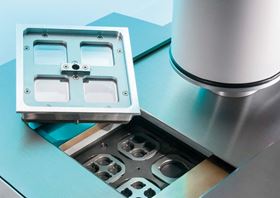


This webinar will focus on polymer applications using a technique that is not mainly used in the polymer analytics field.
The flash technique is a well-established method for measurement of the thermal diffusivity of solids up to high temperatures. In many cases, the technique allows determination of the specific heat and therefore, a direct thermal conductivity measurement. Fast measurement times, easy sample preparation and high accuracy are only some of the advantages of this non-contact, non-destructive measurement technique.
For decades the technique was mainly used for highly conducting materials such as metals or carbon materials. Now, modern flash analyzers are equipped with high-speed Xenon flash or laser systems for generating short light pulses for heating the front side of the sample, which can be held at temperatures ranging from -125°C to above 2500°C. The response signal on the back surface of the sample is now commonly measured using a InSb-IR-detector .
Such systems offer the capability of doing tests on low-conducting materials such as polymers or composite structures, and can easily be adapted to the analysis of multi-layer samples and allow easy measurements on liquid polymers using special container systems.
Following an overview of how the flash technique works, we will provide a number of test cases to demonstrate the performance and flexibility of modern instruments. Furthermore, application examples on solids and liquids as well as the influence of different filling materials on thermal conductivity will be discussed.
Speaker:
Tobias Pflock, Manager Business Segment Polymer, NETZSCH-Gerätebau GmbH, Selb.
Stewart Bland, Editor, Materials Today.
Thank you for registering, and enjoy the on demand version of the webinar, below!